Determining importance is, in my experience as a teacher and tutor, more difficult for readers to learn. Strategies such as predicting or making mental images seem to come a little easier.
I believe this is because determining importance in text is quite a bit more complicated than other strategies. First off, it seems to require more steps for processing. Secondly, text structure dictates, for the most part, what information is or isn’t important. I know it might sound a little scary, but I promise to break it down in bite-size pieces today {in this kind of long post…sorry}. And I also know that helping kids learn to determine importance is vitally important.
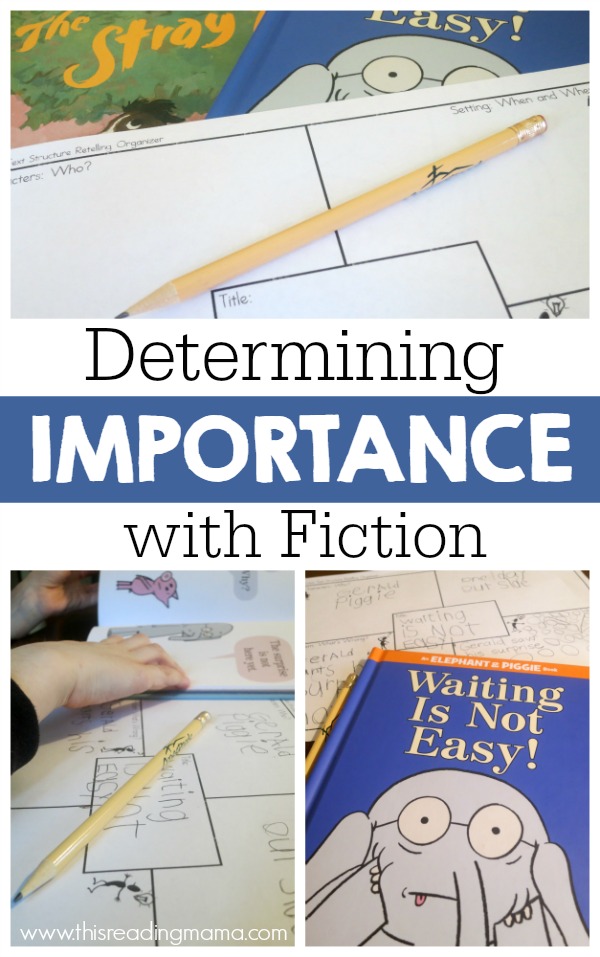
*This post contains affiliate links.
Before I go any further, let me just say WELCOME BACK to our 10-week series, Reading Comprehension Strategies! If you’ve missed any of the lessons or want to read more about it, I encourage you to read our introductory post.
Why Determining Importance in Text is Needed
Have you ever asked a young reader to summarize or quickly retell the story, only to hear him include every little detail? Or maybe, as some of the students I tutored did, she retells only a small part of the text, excluding important characters or events. Or, with nonfiction, his summary shows that he completely missed the purpose of the article or section of text he read.
What these readers need to learn is what is and what is not important. In order to do this, readers must sort through the actions and/or information they’ve read and organize it as important or not so important. Sounds easy, right? Nope. Not exactly. I will be sharing some nonfiction links and resources with you towards the end of this post, but right now, I want to zero in on determining importance with fiction.
Learning About Fiction Text Structure
One of the BEST places to start with determining importance is using something kids are likely familiar with…a favorite story. But you may not want to start with just any story because not all stories are “created” equal. Stories that contain a clear problem/solution story line, like the example below, work best.
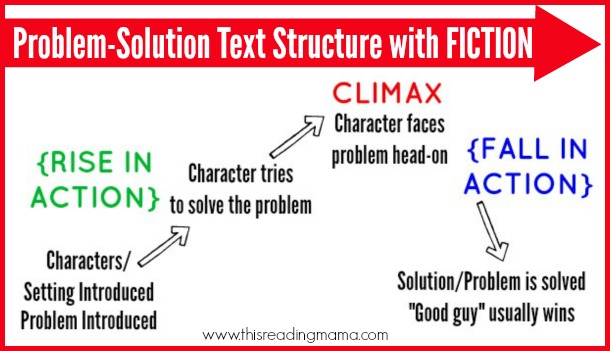
This means that the beginning of the story introduces the characters, the setting, and a problem. The character {or characters} try to solve the problem, until the problem is faced head-on in a climax. After the climax, there is a fall in action as the problem is solved. You can read more in depth about fiction story elements and structure here
or find texts with this structure here.
Determining Importance with Fiction
There are two things to keep in mind when you are introducing something new to a child, especially something that may be a little complicated: 1- MODEL IT and 2- USE WHAT’S FAMILIAR.

Now, I just want to stop a second and say that before I did this lesson for my son, even though I was already very familiar with this book, I read it a few times to myself. I highly recommend doing this before you model a strategy with a book because it helps you pull your thoughts together. That way you can be very clear in your modeling and it’s less likely that rabbits trails will pop up.
1. First, I introduced the fiction graphic organizer, which you can find in this post, by defining each section as:
- characters: the people or animals in the story that do something
- setting: when and where does the story takes place
- problem: what’s wrong in the story
- solution: how does the problem get solved or “fixed”
I said, “These are the important parts of our story. As I read our book today, I’m going to be looking for these important parts.”
2. I read the book out loud, and commented on occasion, “Oh, here’s another character,” or “This looks like a problem.” Although I pointed them out verbally, I didn’t let it distract from the story. When you’re modeling with a book, you want to keep the flow of comprehension going. Too many comments and the story gets lost {this is why it’s good to “practice” what you’re going to say before you do it with your child.}

3. After reading, I filled out my graphic organizer, based on the story. I filled in my characters, the setting, the problem, and the solution. This was not a question and answer time. This was mainly him listening to me “think out loud”. When I finished, I said, “Do you know what’s so cool about all these things I put in my chart? They are the most important parts of my story.”
Using a text with a very clear problem/solution set-up is critical. We want it to be obvious, especially at first, so that kids only have to focus on determining importance, not searching for an obscure problem and solution.
4. Then, I asked him to USE A FAMILIAR TEXT, Waiting is Not Easy, by Mo Willems. By now his attention was waning so all he did on the first day was read it.
5. ON DAY TWO, I started off by quickly revisiting the definitions of character, setting, etc. from the graphic organizer.
6. Then, I gave it to him and retold The Stray Dog out loud. {Remember, this is something I had already practiced to myself beforehand.} After I was finished, I held up the graphic organizer and asked, “What did you notice about my retelling?” He was quick to notice that I had included the characters, setting, problem and solution in my retelling.
“That’s right! Those are the important parts of my story. I NEED to include those if I’m going to tell someone what happened in my story!” {determining importance}
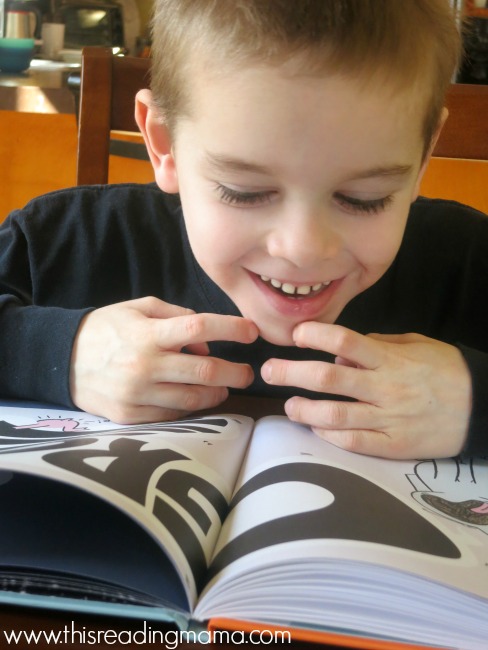
7. Then, I pulled out a blank graphic organizer and said, “Today, it’s your turn. Let’s re-read Waiting is Not Easy and fill in this paper with the important things we need to remember from the story. I was Piggie and he was Gerald. This boy LOVES him some Elephant & Piggie books!
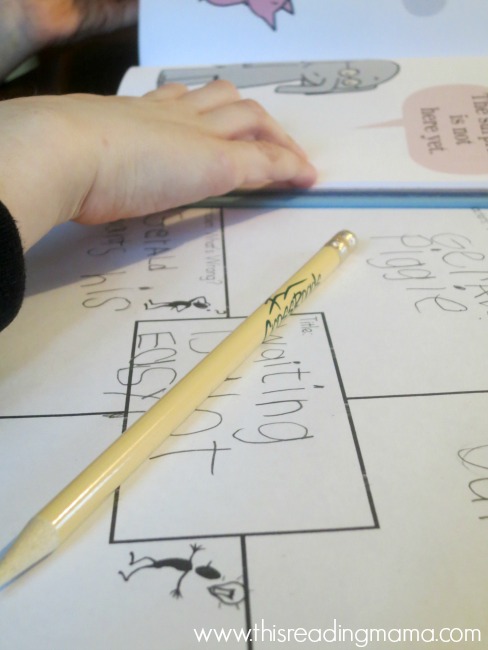
8. While reading, we actively looked for what he would need to fill out. We could go into a little more depth with this because he already knew the story. We looked back through the book, and finalized our answers for the chart.
Note: sometimes his answers were not exactly accurate and I had to ask him leading questions to help him. For example, he said the problem of the story was that Gerald was crying. And while that was true, I asked, “But why was he crying? There’s an even bigger problem in the story than that.”
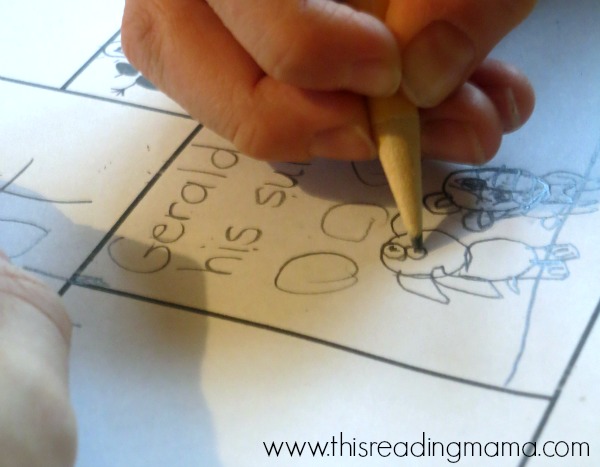
9. By the end of the chart, he was getting tired of writing, so I wrote the solution that we came up with together and he drew a picture of the solution. {By the way, if writing in the chart would stress out your child, DON’T DO IT! Let him DRAW PICTURES in the spaces instead.} His attention was gone at this point, so I put off the last part for the next day.
10. On day 3, we revisited the graphic organizer for Waiting Is Not Easy! one more time, defining the terms, and reading his answers. Then, TOGETHER, we did a retelling of the story. Then I asked this question, “When you want to tell a person about a story you just read, what are the important parts that you need to include?” He pointed to his chart and said, “All of these things.”
Determining Importance with Nonfiction
Determining importance with nonfiction is an entirely different ballgame. Nonfiction is a bit more complicated because there are several different ways that authors can organize information within a text. The kind of organization the author uses {a.k.a. text structure} greatly influences what is or is not important for that text. Below are some extra resources we have for nonfiction. I encourage you to take a peek, as it is important for comprehending nonfiction texts.
- What is Text Structure? Why is it important?
- Examples of Text Features & Text Structure
- Nonfiction Text Structure: Part 1 {FREE PACK!}
- Nonfiction Text Structure: Part 2 {FREE PACK!}
- Descriptive Writing Organizer – works GREAT for learning about the structure of many nonfiction paragraphs.
Follow This Reading Mama’s board Comprehension Strategies on Pinterest.
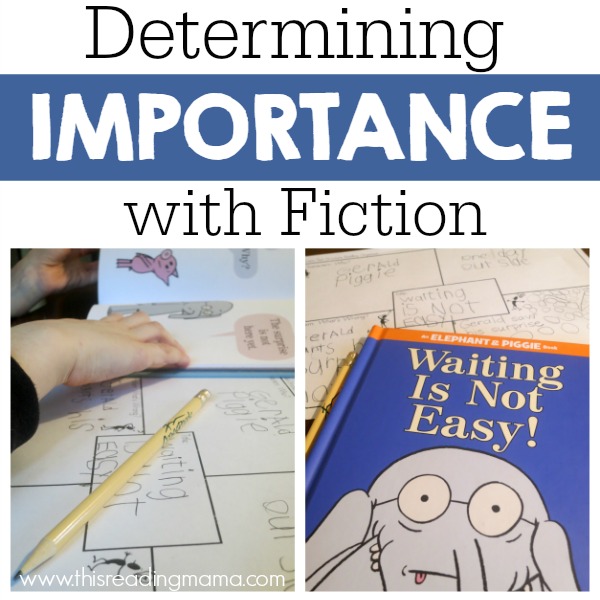
Enjoy!
~Becky
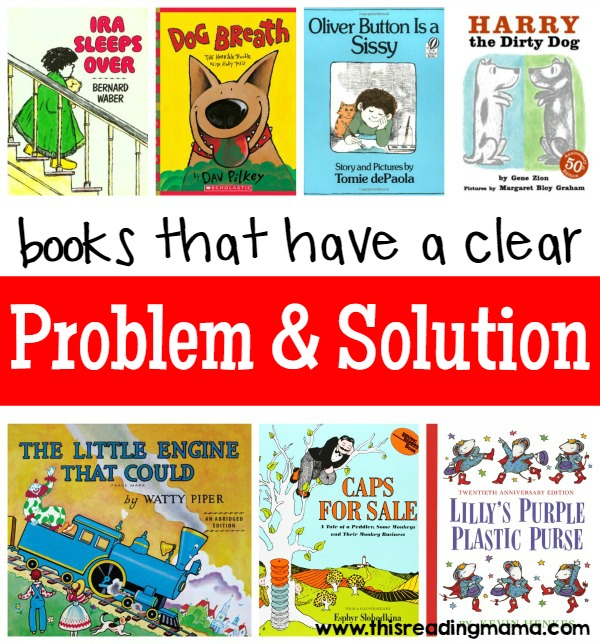

Hi. I have been trying for weeks to join your email list. I tried again today. I hope we can figure this out. This site is awesome.
Hello, is there a free download available for the graphic organizer mentioned above?
Yes, it’s found here–> https://thisreadingmama.com/use-graphic-organizer-prewriting-strategy/
Hello, I just found your site and just read your post on Determining Importance with Fiction. It was wonderful and very helpful. I teach a small self contained classroom of students between grades 4 and 5. The students are behind in both reading and writing skills. I thought both books your referenced in your post were excellent for your child, I was wondering if you had any suggestions for books to use instead of Waiting is Not Easy, as I believe this book is too young for my students. Thanks again for the post and I look forward to reading more.
You can find other books that would better fit your learners in this book list -> https://thisreadingmama.com/books-with-problem-and-solution/
I also would recommend books by Eve Bunting. I think those are great picture books for older kids.